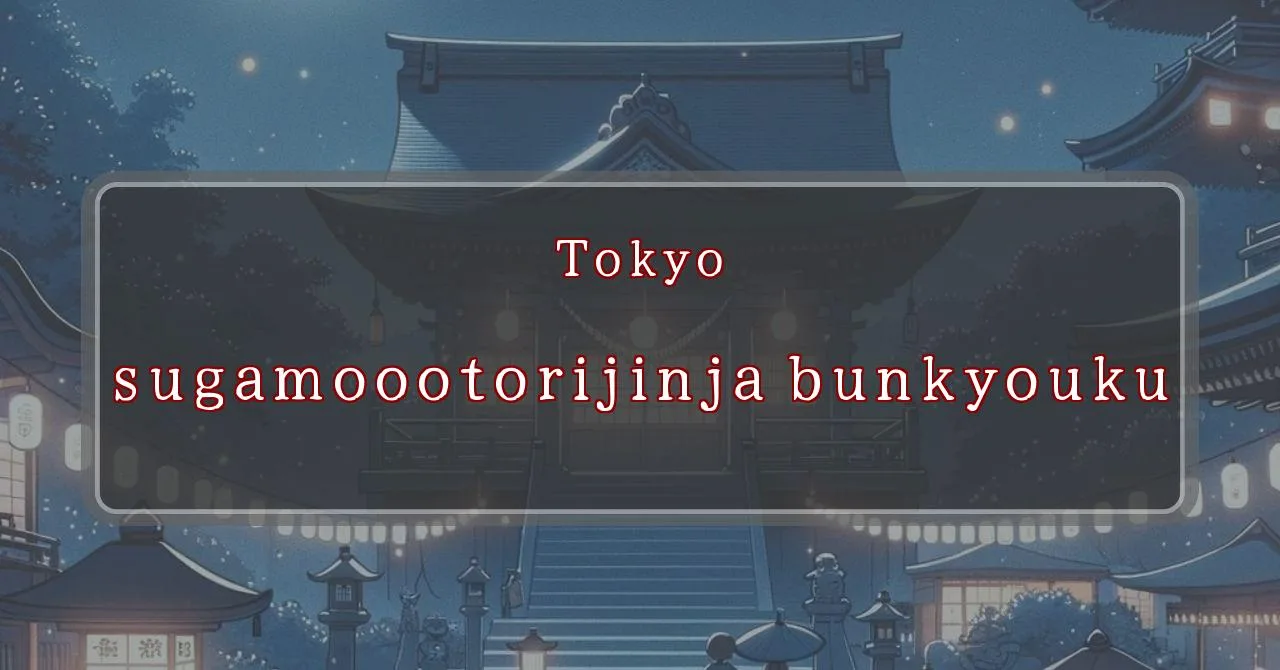A lively autumn festival with 400 years of history.
Basic Information
Discover the vibrant history and traditions of Sugamo Ootori Jinja Shrine, a significant cultural landmark in Tokyo.
- Address: 4-25-15 Senju, Bunkyo-ku, Tokyo 112-0011
- Phone Number: 03-3946-7927
- Access: A 5-minute walk from Sugamo Station on the JR Yamanote Line or Toei Mita Line, or a 5-minute walk from Senju Station on the Toei Mita Line.
- Festival Days: November酉の日 (First Rooster Day) of the lunar calendar (November 11th, 2024)
Main Events and Attractions of the Festival
Discover the captivating events and attractions that await you at the Sugamo Ootori Jinja Shrine Festival, a vibrant celebration of culture and tradition.
酉の市 (酉の日 Market)
Immerse yourself in the lively atmosphere of the酉の市, a bustling market held on the first Rooster Day of the lunar calendar. Browse through an array of traditional Japanese goods, from縁起物 (lucky charms) and熊手 (rakes symbolizing good fortune) to festive decorations and delicious street food. Experience the vibrant energy of this market as locals and visitors alike gather to celebrate and embrace the spirit of the festival.
- Overview: A bustling market featuring traditional Japanese goods and festive atmosphere
- Highlights:
- 縁起物 (lucky charms) and熊手 (rakes symbolizing good fortune)
- Festive decorations and street food
- Opportunity to experience Japanese culture and traditions
神楽殿奉納芸能 (Kagura Hall奉納 Performance)
Witness the enchanting Kagura Hall奉納 Performance, a traditional Japanese performing art that combines music, dance, and storytelling. Be captivated by the graceful movements and melodious voices of the performers as they narrate ancient tales and legends. This captivating performance offers a glimpse into Japan’s rich cultural heritage and provides a unique opportunity to experience the beauty of traditional Japanese art forms.
- Overview: A traditional Japanese performing art featuring music, dance, and storytelling
- Highlights:
- Graceful movements and melodious voices of performers
- Narration of ancient tales and legends
- Insight into Japan’s cultural heritage and traditional art forms
Blessings and Deities
Discover the divine blessings and deities revered at Sugamo Ootori Jinja Shrine, a sacred site steeped in history and tradition.
- Overview: A Shinto shrine dedicated to the deities of commerce and good fortune
- Deities:
- 保食神 (Ukemochi no Kami): Deity of food, agriculture, and industry
- 日本武尊 (Yamato Takeru no Mikoto): Legendary prince and deity of victory and martial arts
- Blessings:
- Prosperity in business and commerce
- Success in endeavors and undertakings
- Protection from misfortune and evil
Origin and History
Unravel the rich history and origins of Sugamo Ootori Jinja Shrine, a testament to the enduring traditions of Japan.
- Overview: A shrine with a history spanning over three centuries
- Establishment:
- Founded in 1688 by Shinzaemon, a local villager
- Initially known as Sugamo Inari Shrine
- Key Events:
- 1755: Construction of the “Toki no Kane” bell tower
- 1849: Renamed to Kosodate Inari Daimyojin
- 1864: Inauguration of the酉の市 (酉の日 Market)
Tips and Notes for Visitors
Ensure a fulfilling and enjoyable visit to Sugamo Ootori Jinja Shrine with these helpful tips and notes.
- Overview: Practical information for a smooth and enriching experience
- Etiquette:
- Observe proper Shinto etiquette, such as bowing before the shrine
- Refrain from taking photos inside the main shrine building
- Accessibility:
- The shrine is wheelchair accessible
- English language information may be limited
- Nearby Attractions:
- Explore the charming Sugamo Jizo-dori商店街
- Visit the nearby Toshima Ward Kumin Hiroba Park for a relaxing stroll
Parking Information
Find convenient parking options near Sugamo Ootori Jinja Shrine to ensure a hassle-free visit.
- Overview: Parking facilities in the vicinity of the shrine
- Parking Lots:
- Limited on-site parking available
- Nearby public parking lots within walking distance
- Fees:
- Parking fees may apply at both on-site and public parking lots
- Rates vary depending on the parking facility
- Additional Information:
- Consider using public transportation to avoid parking concerns
- Street parking may be limited in the area
Popular Stalls and Food Carts in Recent Years
| Type of Stall | Description |
|---|---|
| Takoyaki | A staple at Japanese festivals. Characterized by a crispy outside and a creamy inside. |
| Jaga Butter | A simple yet popular snack of hot potatoes lavishly topped with melted butter. |
| Baby Castella | Small castella cakes, sweet and fluffy treats enjoyed by children and adults alike. |
| Grilled Ayu with Salt | Fresh ayu fish grilled whole with salt, a savory taste of Japanese summer. |
| Shaapin | A unique gourmet item influenced by foreign cuisine, with a chewy skin wrapping the filling. |
| Okonomiyaki | A Japanese grilled dish where you often choose your own ingredients for a personalized flavor. |
| Cotton Candy | A fluffy, sweet snack that’s extremely popular with children. |
| Chocolate Banana | A banana coated in chocolate, a fun and visually appealing dessert. |
| Kushiyaki | Various types of ingredients skewered and grilled, an easy-to-enjoy snack. |
| Yakisoba | Fried noodles mixed with a special sauce, a fast food favorite in Japan. |



